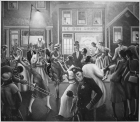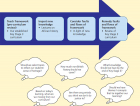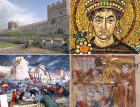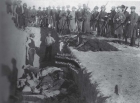Diversity in the past
The materials in this section are all focused on the choices that teachers have to make about the substantive content of their curriculum. The diversity that all students encounter within the past – the range of specific individuals and groups of people about whom they learn – and the ways in which different topics are treated within the curriculum are known to impact on the extent to which young people engage with school history and on the connections that they see between past and present. The resources in this section illustrate different ways in which teachers have increased the diversity of their curriculum – paying more attention, for example, to women other than monarchs in the early modern period; examining the work of Black British civil rights campaigners; or questioning the stereotype of the English ‘Tommy’ in examining who fought for Britain on the Western Front. Teachers will need to develop their own subject knowledge if they are to teach more diverse pasts and many of these resources help to provide some of that new knowledge or show where it can be found.
-

How my interest in what I don't teach has informed my teaching and enriched my students' learning
ArticleClick to view -

How should women’s history be included at Key Stage 3?
ArticleClick to view -

Identity in history: why it matters and must be addressed!
ArticleClick to view -

Identity shakers: cultural encounters and the development of pupils' multiple identities
ArticleClick to view -

Illuminating the possibilities of the past
ArticleClick to view -

In pursuit of shared histories: uncovering Islamic history in the secondary classroom
ArticleClick to view -

Inclusive approaches to teaching Elizabeth I at GCSE
Multipage ArticleClick to view -

Integrating black British history in the National Curriculum
ArticleClick to view -

Inventing race? Using primary sources to investigate the origins of racial thinking in the past
ArticleClick to view -

Lengthening Year 9’s narrative of the American civil rights movement
ArticleClick to view -

Move Me On 183: sees no reason to include Black or Asian British history
ArticleClick to view -

Move Me On 192: analytical focus with diverse histories
ArticleClick to view -

Music, blood and terror: making emotive and controversial history matter
ArticleClick to view -

New, Novice or Nervous? 173: including BME history in the curriculum
ArticleClick to view -

No more ‘doing’ diversity
ArticleClick to view -

Northamptonshire in a Global Context
ArticleClick to view -

Nutshell 135: The challenge of analysing 'difference'
ArticleClick to view -

Planning a more diverse and coherent Year 7 curriculum
ArticleClick to view -

Polychronicon 113: slavery in 20th-century America
ArticleClick to view -

Polychronicon 173: From American Indians to Native Americans
ArticleClick to view

